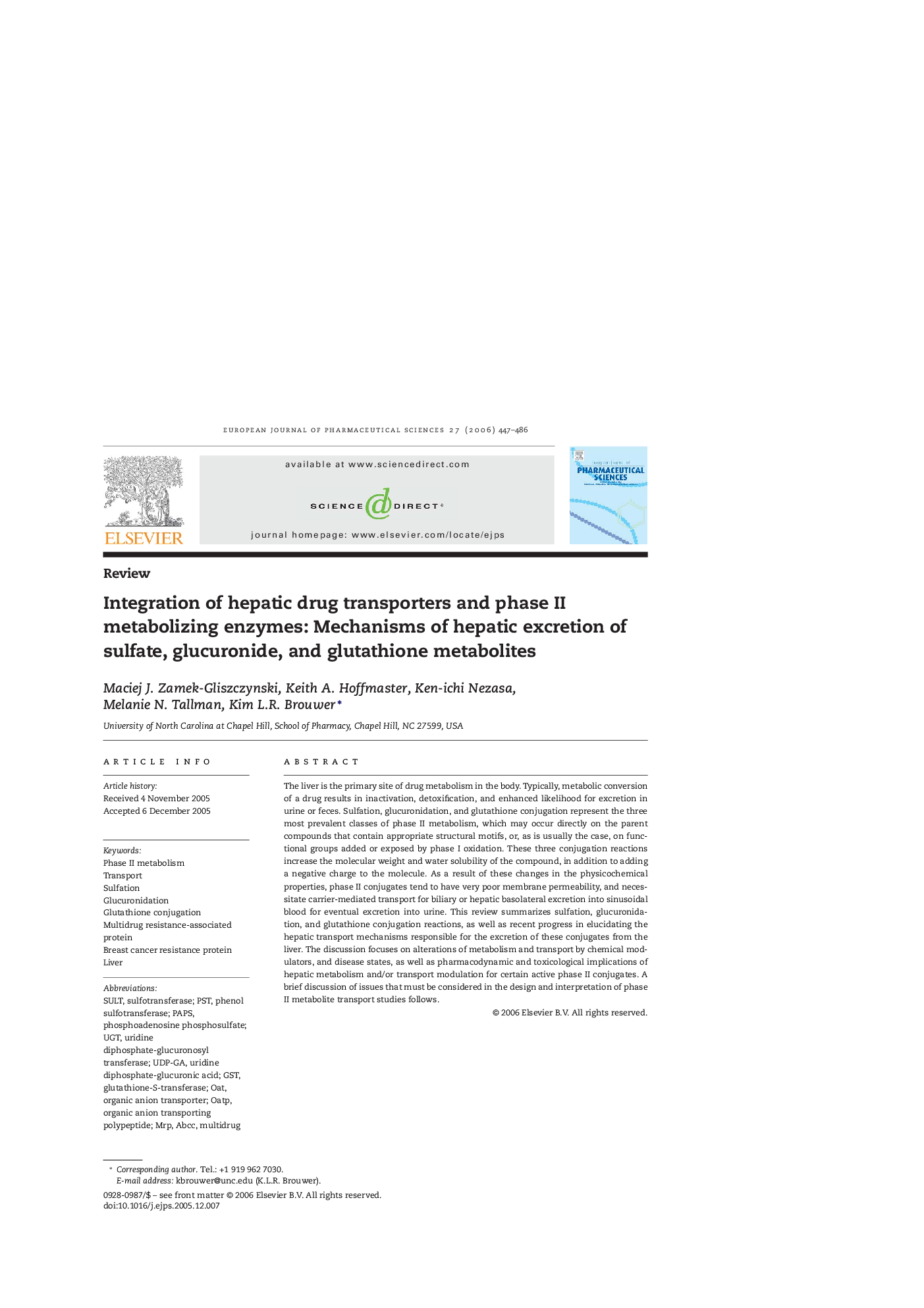| Article ID | Journal | Published Year | Pages | File Type |
|---|---|---|---|---|
| 2482816 | European Journal of Pharmaceutical Sciences | 2006 | 40 Pages |
The liver is the primary site of drug metabolism in the body. Typically, metabolic conversion of a drug results in inactivation, detoxification, and enhanced likelihood for excretion in urine or feces. Sulfation, glucuronidation, and glutathione conjugation represent the three most prevalent classes of phase II metabolism, which may occur directly on the parent compounds that contain appropriate structural motifs, or, as is usually the case, on functional groups added or exposed by phase I oxidation. These three conjugation reactions increase the molecular weight and water solubility of the compound, in addition to adding a negative charge to the molecule. As a result of these changes in the physicochemical properties, phase II conjugates tend to have very poor membrane permeability, and necessitate carrier-mediated transport for biliary or hepatic basolateral excretion into sinusoidal blood for eventual excretion into urine. This review summarizes sulfation, glucuronidation, and glutathione conjugation reactions, as well as recent progress in elucidating the hepatic transport mechanisms responsible for the excretion of these conjugates from the liver. The discussion focuses on alterations of metabolism and transport by chemical modulators, and disease states, as well as pharmacodynamic and toxicological implications of hepatic metabolism and/or transport modulation for certain active phase II conjugates. A brief discussion of issues that must be considered in the design and interpretation of phase II metabolite transport studies follows.
